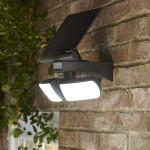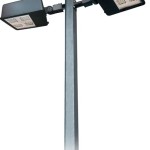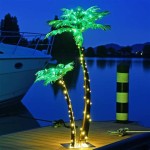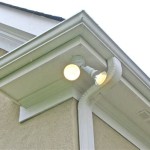Outdoor Lighting Types: Illuminating Your Landscape
Outdoor lighting serves multiple crucial functions, extending beyond mere aesthetics. It enhances safety and security, provides wayfinding assistance, and significantly contributes to the overall ambiance of a property. Selecting the appropriate type of outdoor lighting requires careful consideration of the specific needs of the space, the desired level of illumination, energy efficiency, and the architectural style of the property.
The range of available outdoor lighting options is vast, encompassing various technologies, designs, and applications. Understanding the characteristics of each type allows for informed decision-making and optimal illumination strategies. The following sections detail common types of outdoor lighting, highlighting their features, applications, and potential benefits.
Path Lighting: Guiding the Way
Path lighting is primarily designed to illuminate walkways, driveways, and garden paths. Its primary function is to enhance safety by providing clear visibility, preventing trips and falls, especially during nighttime hours. Path lights typically emit a soft, diffused light that illuminates the ground without causing glare or disrupting the surrounding environment. These fixtures are typically low to the ground and spaced at regular intervals to provide continuous illumination.
Path lighting fixtures are available in a variety of styles, ranging from traditional lantern designs to modern, minimalist forms. Materials commonly used include metal, plastic, and composite materials, chosen for their durability and weather resistance. Solar-powered path lights are a popular option, offering energy efficiency and ease of installation, as they do not require electrical wiring. However, their performance is dependent on sunlight exposure and may be less consistent than hardwired options. Wired path lights, on the other hand, offer reliable and consistent illumination but require professional installation to ensure safety and compliance with electrical codes.
The selection of path lighting should consider the width of the path, the surrounding landscaping, and the desired aesthetic. Taller fixtures may be necessary for wider paths, while shorter fixtures may be more suitable for narrow garden paths. The color temperature of the light also plays a role in the overall ambiance. Warmer color temperatures (around 2700K) create a cozy and inviting atmosphere, while cooler color temperatures (around 4000K) provide brighter and more focused illumination.
Flood Lighting: Security and Area Illumination
Flood lighting is characterized by its broad beam angle and high light output, making it suitable for illuminating large areas. Its primary applications include security lighting, highlighting architectural features, and providing general area illumination. Floodlights are typically mounted on walls, eaves, or poles, providing a wide field of view and deterring potential intruders.
Historically, floodlights utilized incandescent or halogen bulbs, but these have largely been replaced by more energy-efficient LED technology. LED floodlights offer significant advantages in terms of energy consumption, lifespan, and durability. They also consume less power, reducing electricity bills and environmental impact. Furthermore, LED floodlights are available in a range of color temperatures and beam angles, allowing for customization based on specific needs.
Motion-activated floodlights are a common security feature, automatically turning on when movement is detected within a designated range. This provides an immediate deterrent to potential intruders and alerts homeowners to activity on their property. The sensitivity and range of motion sensors can be adjusted to minimize false alarms. When installing floodlights, it is crucial to consider light trespass, which refers to unwanted light spilling onto neighboring properties. Shielding the light source or adjusting the angle of the fixture can help to minimize light trespass and maintain good neighborly relations.
Spot Lighting: Highlighting Architectural Details and Landscaping
Spot lighting focuses a narrow beam of light onto a specific object or area, making it ideal for highlighting architectural details, landscaping features, or outdoor artwork. Spotlights can be used to create dramatic effects, draw attention to focal points, and add visual interest to a property. They are typically adjustable, allowing for precise aiming and customization of the lighting effect.
Spotlights are available in a variety of sizes and wattages, depending on the size of the object being illuminated and the desired level of brightness. Smaller spotlights are suitable for illuminating smaller plants or architectural details, while larger spotlights may be necessary for highlighting larger trees or structures. Like floodlights, spotlights have transitioned to LED technology, offering energy efficiency and long lifespan. LED spotlights are also available in a range of color temperatures, allowing for the creation of warm or cool lighting effects.
Uplighting is a common technique used with spotlights, where the light is directed upwards from the ground, illuminating the object from below. This can create a dramatic and visually appealing effect, especially when used to highlight trees or architectural columns. Downlighting, on the other hand, directs the light downwards from above, providing focused illumination for specific areas or objects. Careful placement of spotlights is essential to avoid glare and ensure that the light is directed where it is needed most. Utilizing dimmer switches can also allow for adjusting the intensity of the spotlights, creating different moods and effects.
String Lighting: Creating Ambiance and Festive Illumination
String lighting, also known as fairy lights or bistro lights, is a versatile and popular option for creating ambiance and festive illumination. String lights consist of a series of small lights strung together on a flexible wire or cable. They are commonly used to decorate patios, decks, pergolas, and trees, adding a warm and inviting glow to outdoor spaces.
String lights are available in a variety of styles, colors, and lengths. Traditional string lights use incandescent bulbs, but LED string lights are becoming increasingly popular due to their energy efficiency and longer lifespan. LED string lights are also available in a wider range of colors, including multicolored options, allowing for greater customization. The bulbs can be classic round shapes, Edison-style for a vintage look, or novelty shapes for themed events.
String lights are relatively easy to install, typically requiring only a power outlet and some clips or hooks to secure the strands. Solar-powered string lights are also available, offering greater flexibility in placement as they do not require an electrical outlet. However, solar-powered string lights may not provide as much brightness or last as long as hardwired options. When hanging string lights, it is important to ensure that the strands are securely fastened and that the weight is evenly distributed. Using a guide wire can help to prevent sagging and ensure a neat and professional appearance.
Deck Lighting: Enhancing Safety and Aesthetics on Decks and Patios
Deck lighting is specifically designed to illuminate decks and patios, enhancing safety and aesthetics. Deck lighting provides visibility for navigating the space at night, preventing trips and falls. It also adds ambiance and visual appeal, creating a more inviting and enjoyable outdoor living area.
Various types of deck lighting options exist, including deck post lights, stair lights, and railing lights. Deck post lights are typically mounted on top of deck posts, providing ambient illumination for the surrounding area. Stair lights are installed on stair risers or treads, illuminating each step to improve visibility and safety. Railing lights are integrated into the deck railing, providing subtle and elegant illumination along the perimeter of the deck.
LED technology is the preferred choice for deck lighting due to its energy efficiency, long lifespan, and durability. LED deck lights are available in a range of color temperatures and brightness levels, allowing for customization based on personal preferences. Low-voltage deck lighting is a popular option, offering a safer and more energy-efficient alternative to high-voltage systems. Low-voltage deck lighting typically requires a transformer to convert standard household voltage to a lower voltage, such as 12 volts.
Underwater Lighting: Illuminating Ponds and Water Features
Underwater lighting is specifically designed to illuminate ponds, fountains, and other water features. Underwater lights add visual interest, create a dramatic effect, and enhance the overall ambiance of outdoor spaces. These lights are typically waterproof and submersible, designed to withstand the harsh conditions of being submerged in water.
Underwater lights are available in a variety of styles, including submersible spotlights, LED strips, and floating lights. Submersible spotlights are typically mounted on the bottom of the pond or fountain, directing light upwards to illuminate the water and surrounding features. LED strips can be used to line the edges of ponds or fountains, creating a soft and diffused glow. Floating lights are designed to float on the surface of the water, providing a unique and eye-catching effect.
Low-voltage underwater lighting is a crucial safety requirement due to the presence of water. Using a ground fault circuit interrupter (GFCI) is also essential to protect against electrical shock. LED technology is the preferred choice for underwater lighting due to its energy efficiency, long lifespan, and low heat output. It's also important to use fixtures specifically designed for underwater use and that are properly sealed to prevent water damage. The color of the light can also affect the look of the water. Blue and green hues can enhance the natural color of the water while white light provides a brighter, cleaner look.

Everything You Need To Know About Landscape Lighting

Landscape Lighting Types Outdoor Lights Backyard Nptpool Com

Landscape Lighting Techniques And Types

Landscape Lighting Designer Outdoor Shockyelectric

Light Guide Outdoor Lighting Fundamentals

Reduce Light Pollution With Better Outdoor Lighting 5 Principles

8 Types Of Outdoor Lighting For Commercial Buildings

A Landscape Lighting Guide For Beginners Metrogreenscape

Outdoor Lighting Types

Types Of Outdoor Landscape Lighting 7 Must Have Fixtures
Related Posts







